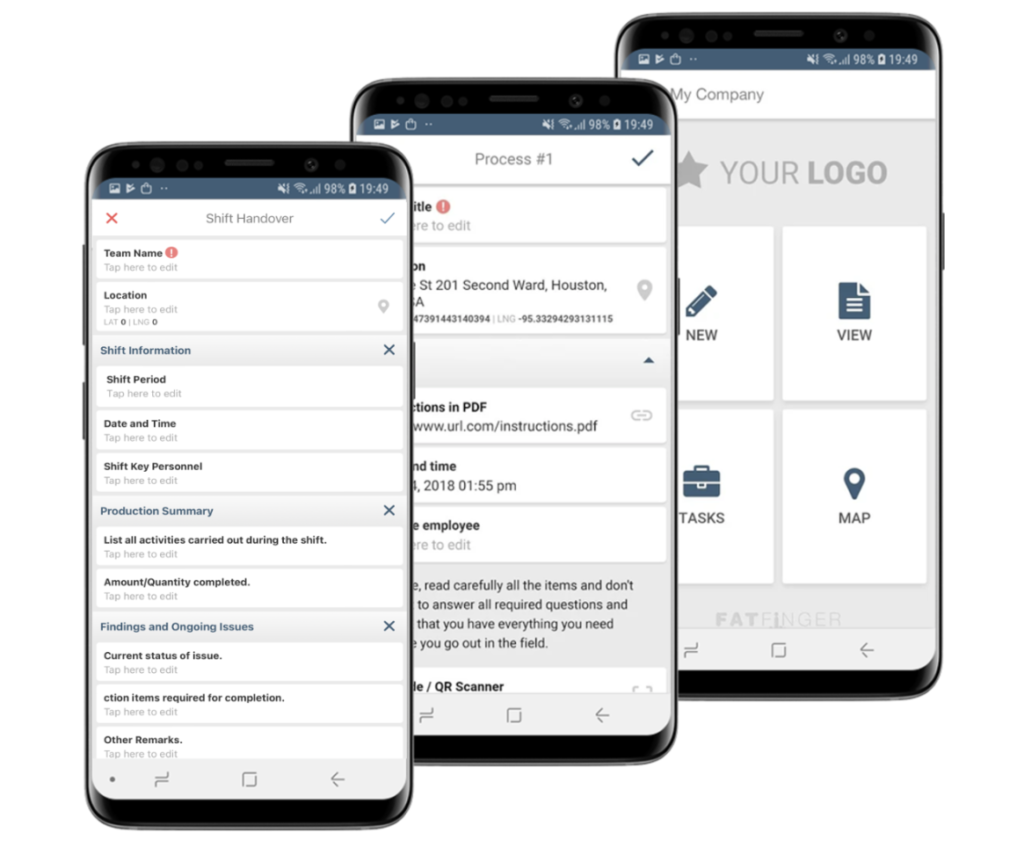Shift handovers are critical in ensuring the smooth transition of responsibilities and information between different teams or individuals.
However, there are common mistakes that can occur during this process. Here are some of them and suggestions on how to avoid them.
1 – Lack of Communication

Shift handovers rely heavily on effective communication to ensure that critical information is transferred seamlessly between team members. The mistake of not prioritizing communication can lead to misunderstandings and oversights and ultimately impact the team’s overall performance. To prevent this, you should establish a structured communication system.
Implementing tools such as shift logs, checklists, and digital platforms can significantly enhance communication during handovers.
- Shift logs provide a written record of important events, tasks, and issues, serving as a reference for the incoming team.
- Checklists help ensure that all relevant information is covered, leaving no room for crucial details to be missed.
- Digital platforms facilitate real-time communication, enabling team members to share updates instantly and reducing the risk of miscommunication.
2 – Incomplete Information Transfer
A thorough overview of ongoing tasks, issues, and critical information is paramount during shift handovers. Incomplete information transfer can lead to confusion, delays, and potential errors. To prevent this, teams should adopt a standardized handover format.
Developing a template that includes key details such as the current status of tasks, pending items, and any unusual incidents provides a framework for a complete exchange of information.
- Encouraging team members to share detailed information ensures everyone is on the same page, minimizing the risk of misunderstandings.
- Regularly reviewing and updating the handover template based on the team’s evolving needs helps maintain its effectiveness over time.
3 – Rushed Handovers
Rushed handovers are a common pitfall that can compromise the quality of information exchange. When shifts change quickly, there’s a higher likelihood of oversight and critical details being missed. To prevent rushed handovers, allocate sufficient time for the transition process.
Scheduling handovers with a buffer allows team members to engage in an unhurried discussion, ensuring that all relevant information is conveyed. Cultivating a culture that values the quality of the handover over speed is essential. Team members should feel empowered to take the time needed to exchange information thoroughly, promoting a smoother transition between shifts.
4 – Ignoring Feedback
Feedback is a valuable resource for continuous improvement, and neglecting to incorporate insights from previous shifts can hinder the effectiveness of handovers. To prevent this mistake, establish a feedback loop that encourages team members to share their experiences and suggestions for improvement.

- Regularly reviewing feedback and adjusting the handover process based on these insights ensures that the process remains dynamic and responsive to the team’s evolving needs.
- Creating an open and transparent environment where feedback is welcomed fosters a culture of continuous improvement, enhancing the overall quality of shift handovers.
5 – Lack of Standardization

Standardization is critical to ensuring consistency and clarity during shift handovers. Confusion can arise when each shift follows a different process, leading to information gaps and potential errors. To prevent this, implement standardized protocols and procedures for shift handovers.
- Developing a clear and universally understood protocol provides a framework that all team members can follow. This includes: a standardized handover format, communication channels, and key points to cover during the transition.
- Training all team members on these protocols ensures everyone is on the same page, promoting a seamless, standardized handover process.
6 – Dependency on Individuals
Overreliance on specific individuals for information during shift handovers can be risky, especially if those individuals are absent or unavailable. To prevent this mistake, encourage a culture of collective responsibility within the team.
- Cross-training team members on various roles and responsibilities ensures multiple individuals are familiar with critical information and processes. This reduces the dependency on specific individuals.
- Promoting shared responsibility fosters a more resilient and adaptable team dynamic.
7. Not Prioritizing Safety Information
Safety information is paramount in many operational environments, and neglecting to prioritize communication during handovers can have severe consequences. To prevent this mistake, prioritize safety during the handover process.
- Designate specific sections in the handover template for safety-related updates, incidents, and protocols.
- Emphasize the importance of sharing safety information and ensure all team members are well-informed about safety procedures.
- Integrate safety discussions as a standard part of the handover process to create a safety-conscious culture within the team.
8. Failure to Document
Relying solely on verbal communication without proper documentation can lead to information loss and misunderstandings. To prevent this mistake, emphasize the importance of documentation in the handover process.

Having a documented record provides a reference point for both incoming and outgoing teams, reducing the risk of miscommunication and ensuring that critical information is easily accessible.
- Encourage using digital or physical logs where team members can record important details, tasks, and incidents.
- Regularly review and update documentation procedures to align with the team’s evolving needs.
9. Inadequate Training

Assuming that team members inherently know how to conduct effective handovers is a common oversight. To prevent this, provide comprehensive training on the critical elements of successful handovers.
- Ensure that all team members, both new and experienced, receive regular training updates to reinforce good practices and address any emerging challenges.
- Training should cover effective communication, proper documentation practices, and the specific procedures for the handover process.
- Training should be ongoing, to contribute to a more skilled and competent team, enhancing the overall quality of shift handovers.
10. Neglecting Technology
In the digital age, neglecting to leverage available technology for more efficient and accurate handovers is a missed opportunity. To prevent this mistake, explore digital tools and platforms that streamline the handover process.
Messaging apps, collaborative software, or specialized handover applications can facilitate real-time communication, documentation, and information sharing. These tools enhance handovers’ efficiency and provide a centralized platform for team members to access critical information. Embracing technology can significantly improve the overall effectiveness of shift handovers in modern work environments.
Build Shift Handover Workflows With FAT FINGER
Fat Finger is a comprehensive solution designed to streamline shift handover processes, addressing several common challenges associated with this critical transition. This no-code, drag and drop digital procedure builder, offers a user-friendly interface that facilitates efficient communication, documentation, and collaboration among team members.
With FAT FINGER, you’ll enjoy the following:
- Real-time Updates: The platform enables real-time communication, allowing team members to share updates, notes, and critical information instantly.
- Documentation and Logging: FAT FINGER allows you to customize checklists and logs to document tasks, incidents, and ongoing issues, creating a digital record for easy reference by both incoming and outgoing teams.
- Mobile Accessibility: Team members can access and contribute to the handover process from anywhere, promoting flexibility and accessibility.
- Integration Capabilities: FAT FINGER can integrate with other tools and systems, including AR and IoT, enhancing interoperability and ensuring a seamless flow of information across different platforms.

By incorporating FAT FINGER into the shift handover process, teams can mitigate the risk of communication errors, improve documentation practices, and foster a collaborative environment. This solution aligns with the modern workplace’s emphasis on digital efficiency and can significantly enhance the overall effectiveness of shift handovers.


